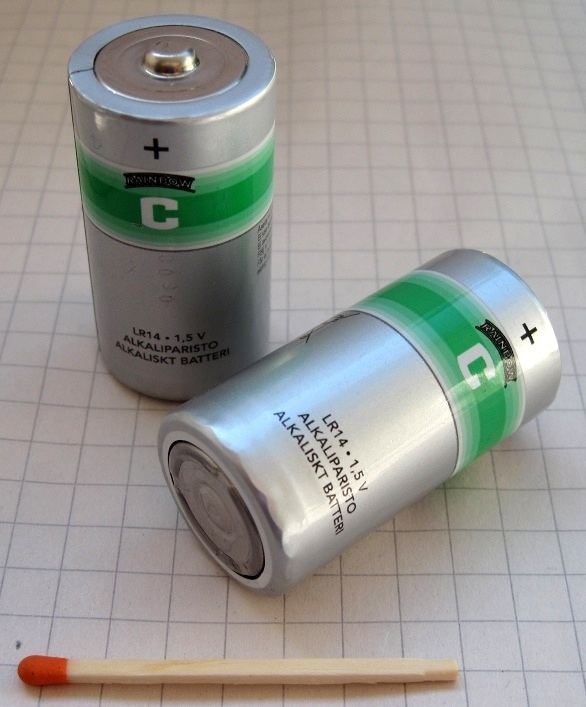 | ||
The 'C' "battery" (or R14 battery) is a standard size of cell typically used in medium-drain applications such as toys and musical instruments.
Contents
As of 2007, C batteries accounted for 4% of alkaline primary battery sales in the United States. In Switzerland as of 2008, C batteries totalled 5.4% of primary battery sales and 3.4% of secondary battery sales.
Properties
A 'C' battery measures 50 millimetres (1.97 in) length and 26.2 millimetres (1.03 in) diameter.
The voltage and capacity of a 'C'-size battery depends on the battery chemistry and discharge conditions. The nominal voltage is 1.5V. Alkaline 'C' batteries can hold up to 8,000 mAh, rechargeable NiMH 'C' batteries can hold up to 6,000 mAh, and zinc-carbon 'C' batteries usually hold up to 3,800 mAh.
Standardisation
Like the D battery, the C battery size has been standardized since the 1920s. The AA, AAA, and N sizes have been in common use since the 1950s.
The C battery is called "14" in current ANSI standards of battery nomenclature, and in IEC standards is designated "R14".
